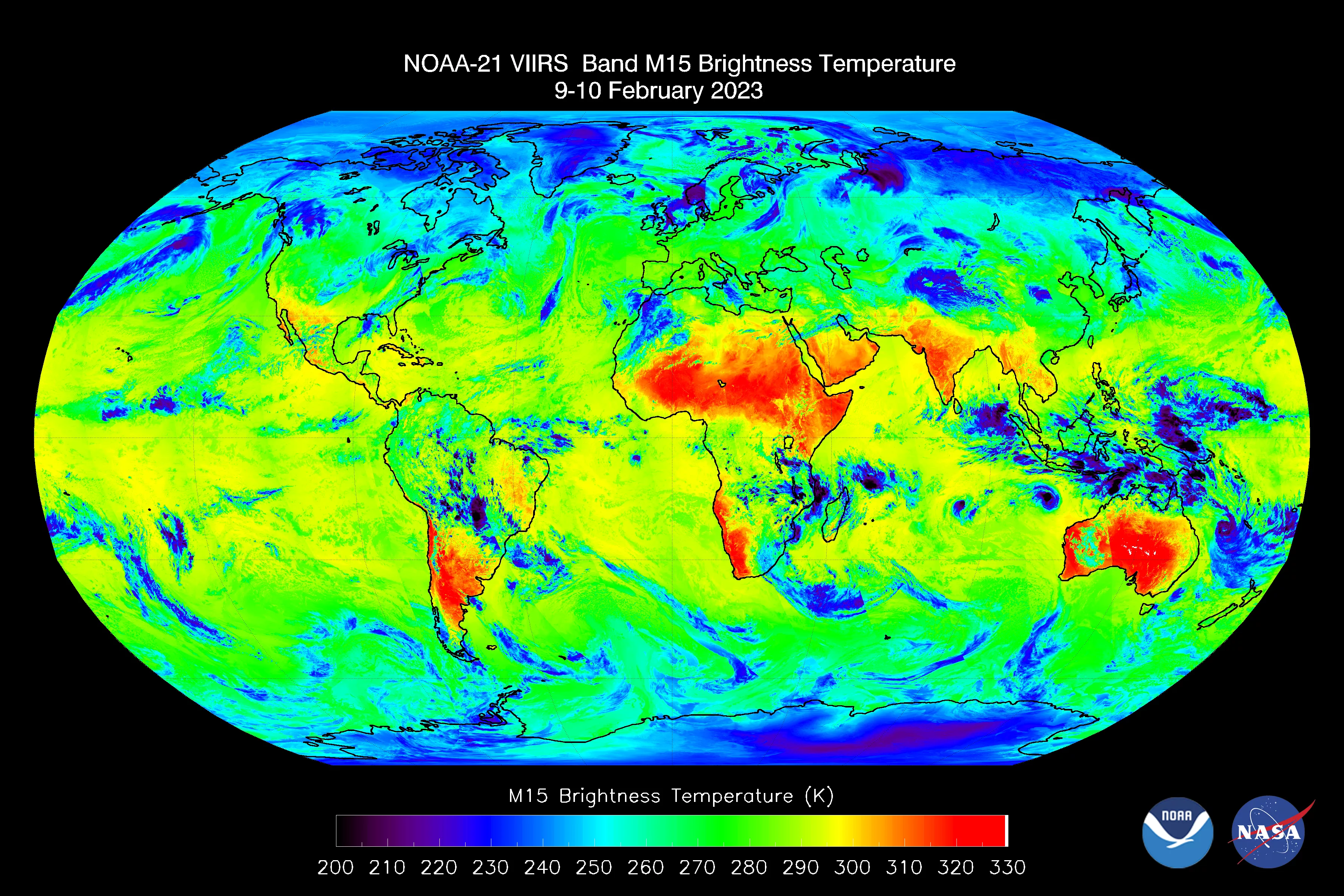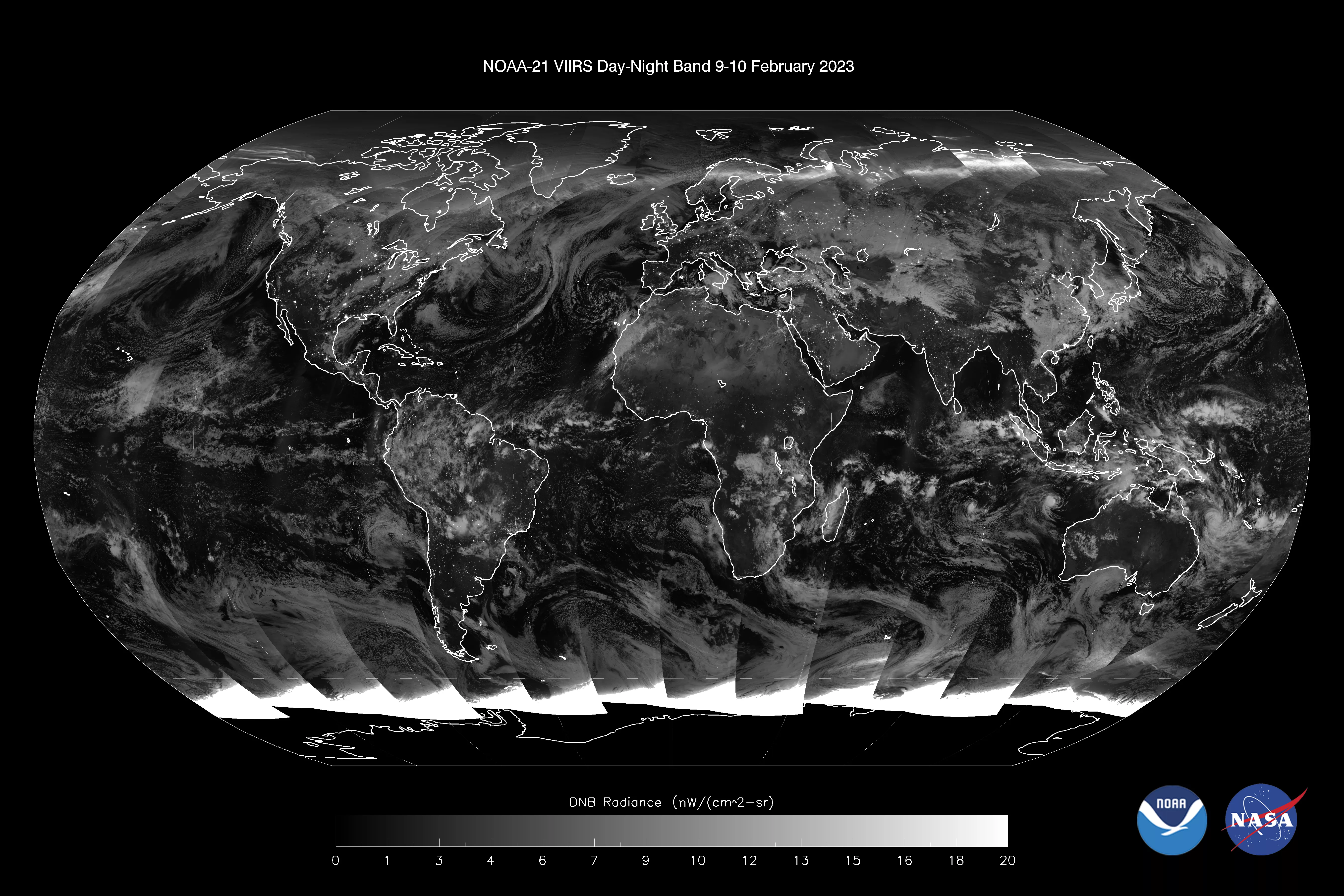The Visible and Infrared Imaging Radiometer Suite (VIIRS) on the recently launched NOAA-21 satellite started collecting Earth science data from its Day-Night Band (DNB) and its Thermal Emissive Bands (TEB) on Feb. 9, 2023. This comes three months after the satellite launched from Vandenberg Space Force Base on Nov. 10, 2022.
Thermal Emissive Band imaging data has several important applications: It allows for measurements of sea and land surface temperatures, wildfire intensity, and the detection of clouds. This image, captured on Feb. 9 and Feb. 10 shows cold objects such as clouds, snow and ice as blue, and warm surfaces such as deserts in shades of red.

VIIRS on NOAA-21 also started acquiring data in its unique “Day-Night Band (DNB)” on Feb. 9, 2023. Since its debut on VIIRS on the Suomi National Polar-orbiting Partnership (SNPP) satellite more than 10 years ago, the DNB has revolutionized how we view the Earth from space at night. The DNB is a unique VIIRS capability that measures low signals of reflected light illuminated by the moon at night and is used for detecting nighttime clouds and fog. Illumination from manmade sources such as city lights, flaring from natural gas wells, and shipping vessels can also be seen via the DNB.
The following image was created by stitching together the orbit swaths collected from Feb. 9–10, 2023. City lights all over the world are clearly visible in this image. Clouds that are illuminated by the moon are seen in shades of white depending upon the opacity and thickness of the cloud cover. Over Siberia, one can see the aurora borealis (northern lights) as a bright streak. Note that the south polar region is daytime this time of the year and thus is very bright.

Images are generated by the NOAA/NESDIS/STAR/JPSS Sensor Data Record Science Team.
